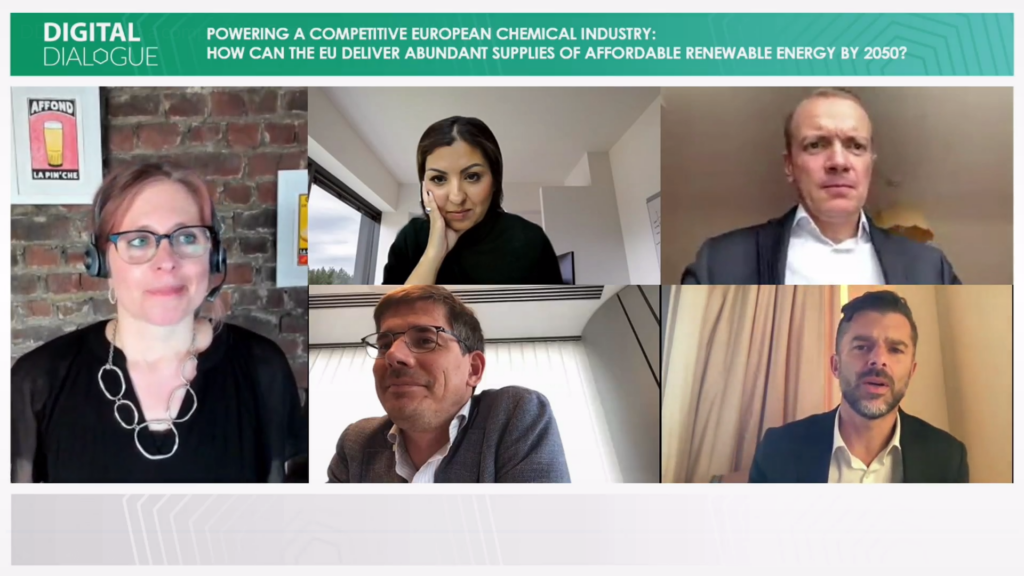Cross-industry panel agrees on the urgency to upscale the volumes of renewable energy but planning and permitting remain a challenge

Between now and 2050 $11.5 trillion of investment will go into electricity generation globally and of that, 85% into wind, solar, and other zero-emission technologies. In theory, these investments should help our societies to get climate neutral, but in Europe, the challenge of unlocking these clean energy sources lies with planning and permitting for new and repowered renewable energy projects. This was the key takeaway of a cross-stakeholder panel brought together by Cefic during the Chemical Convention.
In an engaging discussion on the generation, transportation, and use of renewable energy, the panellists debated the ambition of the EU Renewable Energy Directive (RED). MEP Bas Eickhout stated that the current EU target is lacking ambition: “Looking at the Fit for 55 package, I think the first question is, are the targets sufficient. For the Renewable Energy target, the ambition level is too low.“
Eickhout stressed that Europe lacks a serious EU energy market: “Concern is that countries go in different directions. We need a better vision of what does that [the Fit for 55 package] mean for our infrastructure and energy system, and only then investors will get on board.”
Representing the Wind energy sector, Giles Dickson, CEO of WindEurope pointed out that 40% renewable energy target by 2030 requires the wind sector to build 30 GW of new wind every year between now & 2030. “But as it stands we expect to build only 15 GW a year over 2021-25. Problem isn’t lack of ambition, it’s the difficulty to get permits.”
Tapping into the discussion on the needed volumes of renewable energy to get climate neutral by 2050, Pete Harrison, Executive Director of European Climate Foundation put a figure on the challenge saying: “There is clearly a massive challenge to provide the renewable energy for the growing demand. The chemical sector will need around 4 times more energy in 2050 [than today] and it will need to be zero carbon.”
Another issue touched upon by the speakers concerned bottlenecks in the energy infrastructure. Shradha Abt, Deputy Head of Office, EU Government Relations at BASF shared an example of energy that cannot be transported to a chemical plant. “The order of the challenge is huge and we in BASF take the responsibility. We see a lack of interconnectivity, infrastructure, capacity generation, and prices. There is a mismatch between supply and demand. We need so much more than what is currently projected.” To help improve the European energy market infrastructure Giles Dickson advised looking into the rules around the guarantee of origin and highlighted the importance of the renewable energy supply chain: “The supply chain needs ambition and clarity on what the future volumes are going to be.”
The panel concluded that the shared goal is to quickly ramp up renewable energy but planning and permitting are issues of concern. It was agreed that more work is needed to ensure the energy grid can cope with the current and increasing future demand. As the transformation of the chemical industry towards climate neutrality is a massive exercise and requires much more electricity as currently is available, Cefic will continue engaging with all the stakeholders to find ways for how the EU can increase supplies of renewable energy needed to achieve the 2050 goals.